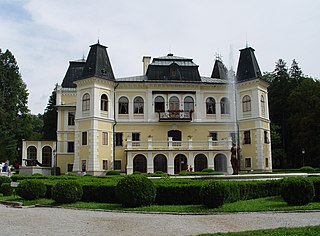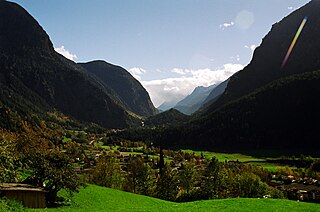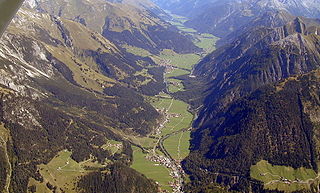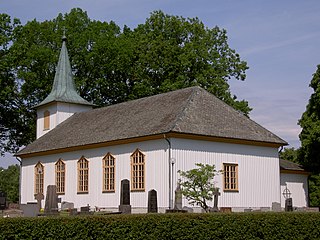
Santa Felicità is a Roman Catholic church in Florence, region of Tuscany, Italy, probably the oldest in the city after San Lorenzo. In the 2nd century, Syrian Greek merchants settled in the area south of the Arno and are thought to have brought Christianity to the region. The first church on the site was probably built in the late 4th century or early 5th century and was dedicated to Saint Felicity of Rome. A new church was built in the 11th century and the current church largely dates from 1736–1739, under design by Ferdinando Ruggieri, who turned it into a one nave edifice. The monastery was suppressed under the Napoleonic occupation of 1808–1810.

The Vall de Boí is a narrow, steep-sided valley and a small municipality in the province of Lleida, in the autonomous community of Catalonia, northern Spain. It lies in the northeastern corner of the comarca of Alta Ribagorça, on the edges of the Pyrenees. It is the largest municipality of the region, with its main town being Barruera.

Betliar is a village and municipality in the Rožňava District in the Košice Region of eastern Slovakia, known for its manor house.

Doroslovo is a village in Serbia. It is located in the municipality of Sombor, West Bačka District, Vojvodina province. The population of the village numbering 1,830 people and most of its inhabitants are ethnic Hungarians. Villagers are mostly preoccupied with farming. It is widely known as a Christian pilgrimage site.

Brenner is a comune in South Tyrol in northern Italy, located about 60 km (37 mi) north of Bolzano on the border with Tyrol, Austria.

Natz-Schabs is a comune (municipality) in South Tyrol in northern Italy, located about 40 kilometres (25 mi) northeast of the city of Bolzano.

Lavant is a municipality in the district of Lienz in the upper Drautal valley in East Tyrol, Austria. It is located southeast of the city of Lienz.

Gries am Brenner is a municipality in the Wipptal in the southern district of Innsbruck-Land. The village consists of several hamlets.

Berwang is a municipality with 564 inhabitants in the district of Reutte in the Austrian state of Tyrol. The districts are Brand, Bichlbächle, Gröben, Kleinstockach, Mitteregg, Rinnen, Tal. The municipality is located in the district court Reutte.

Wiesbach is a municipality in Südwestpfalz district, in Rhineland-Palatinate, in the southwest of Germany. The place name is composed of the two German words for meadow and brook.

Gramais is a municipality of 41 inhabitants in the district of Reutte in the Austrian state of Tyrol. The municipality is located in the district court Reutte. It is the smallest municipality in Austria.

Häselgehr is a municipality with 686 inhabitants in the district of Reutte in the Austrian state of Tyrol. The municipality is located in the district court Reutte. Since 2010, the community is a member of the Climate Alliance Tyrol.

Oetz is a municipality in the Imst district of Tyrol, Austria, located 11.7 km (7.3 mi) southeast of Imst at the lower course of the Ötztaler Ache in the outer Ötztal valley at the foot of Acherkogel mountain.

Montisi is a village in the municipality of Montalcino, Province of Siena, Tuscany. The hill on which is Montisi in on the boundary between the Val d'Orcia and the Crete Senesi.

Kühtai is a winter sports village in the Stubai Alps on the Kühtai Saddle between the Nedertal valley in the west and the Sellrain valley in the east. It is part of the municipality of Silz, in the district of Imst, in the Austrian state of Tyrol.

The Lechtal is an alpine valley in Austria, the greater part of which belongs to the state of Tyrol and the smaller part to Vorarlberg. The Lech river flows through the valley.

Tresfjord Church is a parish church of the Church of Norway in Vestnes Municipality in Møre og Romsdal county, Norway. It is located in the village of Tresfjord. It is the church for the Tresfjord parish which is part of the Indre Romsdal prosti (deanery) in the Diocese of Møre. The white, wooden church was built in an octagonal style in 1828 by the architect and master builder Erik Kroken. The church seats about 220 people.

Tisselskog Church belongs to the Steneby-Tisselskogs parish in the Diocese of Karlstad, Sweden. The church is located on a hill about 2 km (1.2 mi) north of Lake Råvarpen, a part of the Dalsland Canal. Approximately 500 metres (1,600 ft) south of the church is a former clergy house, built in 1935. In the south part of the grave yard is a mourge built in the 1940s and a storage house built in 1995.

The Basilica minor of the Exaltation of the Holly Cross is a Late Gothic three-nave Catholic church located in the town Kežmarok in the Spiš region of eastern Slovakia.

Barkåkra Church is a church in Barkåkra, Ängelholm Municipality in the Swedish province Skåne (Scania). One of the oldest churches in the area, it dates from the 12th century but has been heavily rebuilt, partially during the Middle Ages and partially during the 19th and 20th centuries.






















